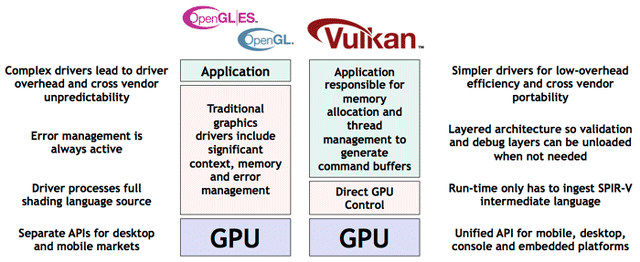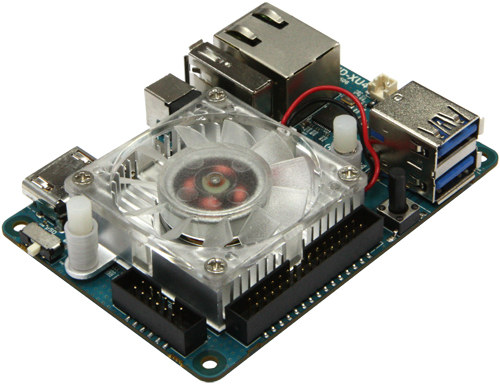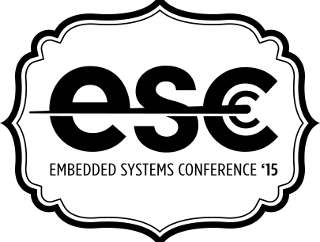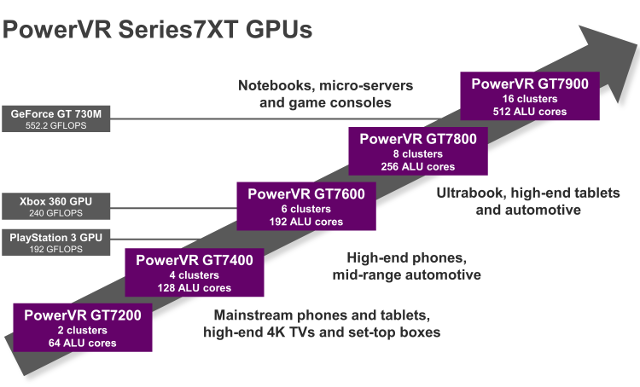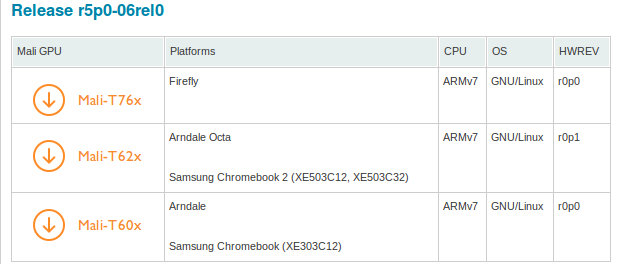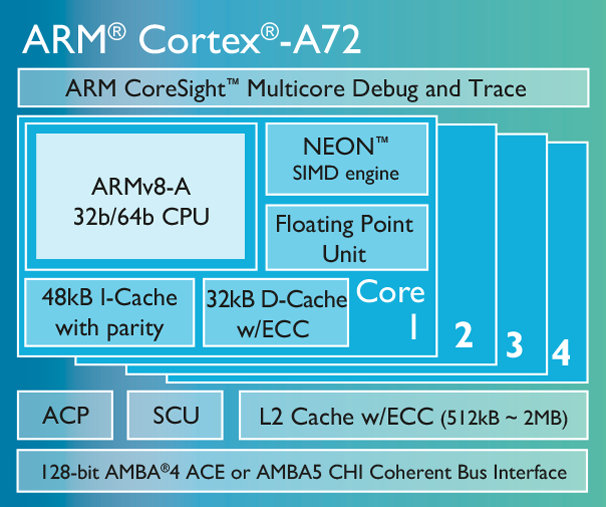Vulkan graphics API is the successors to OpenGL and OpenGL ES API, which will support multi-threaded rendering, move some of the complexity to the applications, and simplify graphics drivers, which may not be a bad things since these tend to be closed source, and bugs may be hard to get fixed. Google, which is now a subsidiary of a new company called Alphabet, has recently announced that Vulkan will be implemented in future versions of Android, although OpenGL ES will still be supported, so developers can select their preferred graphics API for their apps, as Vulkan will be more complex for application programmers than OpenGL ES. Separately, Imagination technologies showcased their Vulkan driver for PowerVR Rogue GPU on the Nexus Player powered by an Intel SoC including a PowerVR G6430 GPU, and compare the Vulkan demo to the same demo using OpenGL ES 3.0 drivers. The difference between Vulkan and OpenGL […]
ODROID-XU4 Development Board is a Smaller and Cheaper Version of ODROID-XU3 Board
Many people are expecting Hardkernel to launch an Exynos 7 board, but this won’t be with ODROID-XU4, maybe with ODROID-XU5, as the latest development board from Hardkernel is a modified version of ODROID-XU3 with the same Exynos 5422 octa-core processor with four Cortex-A15 cores @ 2GHz and four Cortex-A7 cores. ODROID-XU4 board specifications (differences with ODROID-XU3 highlighted and sometimes crossed out in bold): SoC – Samsung Exynos 5422 quad core ARM Cortex-A15 @ 2.0GHz quad core ARM Cortex-A7 @ 1.4GHz with Mali-T628 MP6 GPU supporting OpenGL ES 3.0 / 2.0 / 1.1 and OpenCL 1.1 Full profile System Memory – 2GB LPDDR3 RAM PoP (750 MHz, 12GB/s memory bandwidth, 2x32bit bus) Storage – Micro SD slot (up to 64GB) + eMMC 5.0 module socket (16, 32, and 64GB modules available) Video Output – micro HDMI (Up to 1080p) and DisplayPort (up to 2160p) Audio Output – HDMI, 3.5mm headphone jack, […]
Open Source Linux Drivers for PowerVR GPUs Might Be in the Works
When I write about a new processor with a PowerVR GPU, I can be sure there will be one or two comments saying something like “It has a PowerVR GPU, it’s a non-starter”, mostly because of the status of graphics drivers in Linux. Luc Verhaegen (libv) also made a presentation at FOSDEM 2013 listing various open source projects for GPUs found in ARM processors and PowerVR was the only one without any community project. Bear in mind that apart from Nvidia, and to some extend Broadcom for the VideoCore IV GPU found in BCM2835 / BCM2836 processors used in Raspberry Pi boards, no other companies have released user space drivers for their GPUs, and all work is done by volunteers for other open source GPU drivers, and I’m not sure any of them work 100% yet. Imagination has already provided working GPU drivers for their MIPS Creator-CI20 board, these are […]
Embedded Systems Conference 2015 Schedule – May 6-7, 2015
The Embedded Systems Conference took the name “Design West” for a couple of years, but this year, there’s no mention of Design West, and the Embedded System Conference 2015 will take place in Boston, MA, US on May 6-7, 2015. The 2-day event will have a demo hall, and well as sessions divided into 8 tracks: Connected Devices and the IoT Embedded Software Design Hardware: Design, I/O and Interfacing Prototyping Embedded Systems Design Software: Design, Languages, & Quality Fantastical Theater Teardowns The full schedule has now been posted, and I’ll build a virtual schedule with some of the sessions provided. Wednesday May 6, 2015 8:00 – 8:45 – Understanding Google/Nest Thread by Michael Anderson, Chief Scientist, The PTR Group, Inc. The IoT will live or die based on its connectivity. In examining existing wireless protocols, Google/Nest found most of them lacking. In order to address the needs for low-power wireless […]
Meet Vulkan, The Successor of OpenGL and OpenGL ES 3D Graphics APIs
So far embedded systems are typically using SoCs with GPU supporting OpenGL ES, a subset of the full fledge OpenGL API used in desktop computers and workstations. These royalty-free standards are defined by Khronos Group non-profit organization, and as features in the embedded space and traditional computers merge, the group has now revealed the next-generation OpenGL specs will be called Vulkan. The new API will run on GPUs supporting OpenGL ES 3.1 or greater, take less CPU resources than its predecessors, and support multiple command buffers that can be created in parallel. More work will be required at the application level, but direct GPU control by the drivers will apparently result in less memory copies improving performance, or at least off-loading the CPU. It might be transparent to developers using game engines. GPU drivers will also be less complex. Vulkan will also use the new SPIR-V language shared with OpenCL […]
Imagination PowerVR GT7900 GPU is Made for Game Consoles and Notebooks
Imaginatino Technologies has just introduced the most powerful GPU of their new PowerVR Series7 GPU family with GT7900 featuring 16 unified shading clusters and 512 ALU cores for game consoles, micro-servers, and notebooks. PowerVR GT7900 is still an embedded GPU with support for OpenGL ES 3.1 + AEP (Android Extension Pack) compatibility, full hardware support for tessellation and ASTC LDR and HDR texture compression standards. The new GPU delivers up to 800 GFLOPS (FP32) or 1.6 TFLOPS (FP16) graphics and compute performance at 800 MHz (using 16 nm FinFET+ manufacturing process), which compares to about 550 GFLOPS (FP32) for an Nvidia GeForce GT730M at comparable frequency. This is even more powerful than the Maxwell GPU found in Tegra X1 which delivers 1+ TFLOPS (FP16), although the Nvidia processor may have a lower power envelope. Combined with PowerVR Series5 decode and encode video processors and PowerVR V2500 camera processor, GT7900 can […]
ARM Releases Kernel Drivers for Mali-T880 / T860 GPUs, User Space Drivers for Mali-T76x GPUs
ARM Mali GPU drivers includes both open source kernel drivers, and binary userspace drivers supporting framebuffer and/ior X11 implementation. The former is rarely an issue and is quickly released, but the latter requires porting and testing for a specific hardware platform, as well legal work, which greatly delay the releases. Mali-T880 GPU was announced at the beginning of the month together with ARM Cortex A72, and on February 17, 2015, ARM released an update to their Mali-T600 series, Mali-T700 series & Mali-T860/T880 GPU kernel device drivers with revision r5p1-00rel0 that adds supports to Mali-T860 and Mali-T880 GPU. These open source drivers are available for Android and Linux, and also support early Mali-T700 and T600 GPUs. Separately, the company has also released Mali-T76X GPU drivers for Firefly board powered by Rockchip RK3288 quad core Cortex A17 processor featuring a Mali-T764 GPU. The first release only supports the framebuffer driver, but ARM […]
ARM Unveils Cortex A72 Processor and Mali-T880 GPU
ARM has just announced their new Cortex A72 ARMv8 core with 3.5 times the performance of Cortex A15 ARMv7 cores, together with Mali-T880 GPU delivering 1.8 times the performance of Mali-T760, and CoreLink CCI-500 Cache Coherent Interconnect to link the new CPU, GPU and I/Os together. ARM Cortex A72 Some of the key features of the new core include: Architecture – ARMv8-A Multicore – 1-4x SMP within a single processor cluster, and multiple coherent SMP processor clusters through AMBA 5 CHI or AMBA 4 ACE technology ISA Support AArch32 for full backward compatibility with ARMv7 AArch64 for 64-bit support and new architectural features TrustZone security technology NEON Advanced SIMD DSP & SIMD extensions VFPv4 Floating point Hardware virtualization support Cache – 48KB I-cache, 32KB D-cache, and 512 KB to 2MB L2 cache with ECC Debug & Trace – CoreSight DK-A57 Process – 16nm FinFET A cluster can support up to […]


